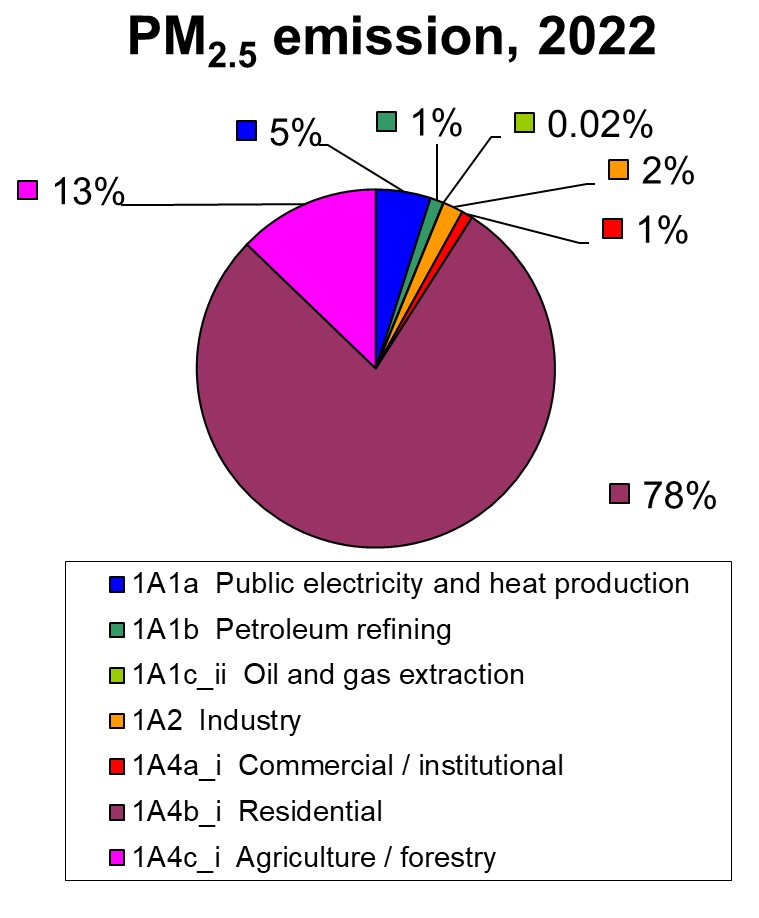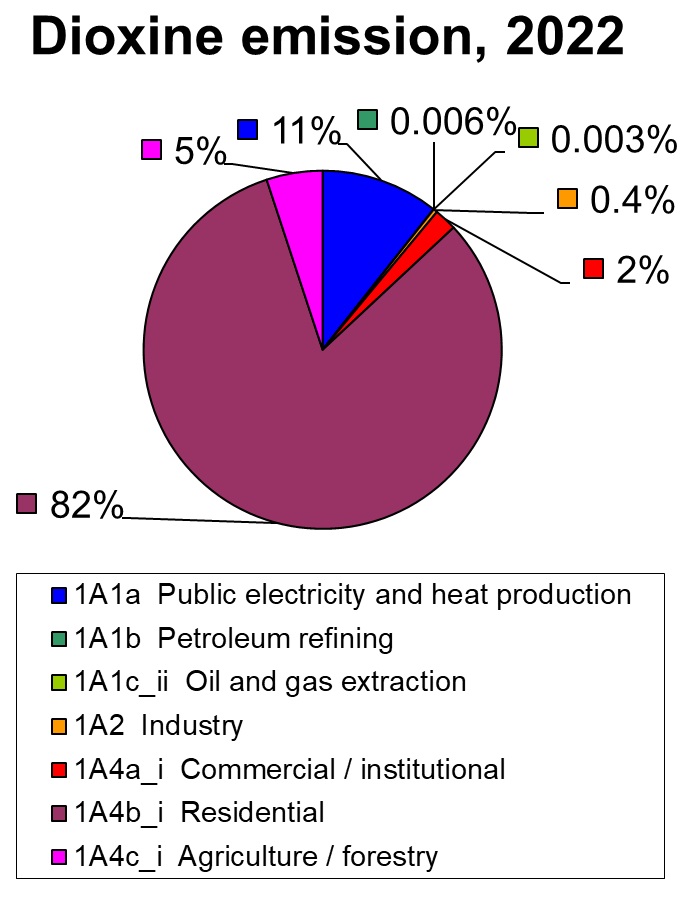Stationary combustion is part of the Fuel Combustion sector that is a sub-sector to the Energy sector. Stationary combustion includes power plants, combined heat and power production plants, industrial combustion plants and district heating plants as well as small plants e.g. stoves and residential boilers.
Stationary combustion plants consist of the emission source sub-categories;
The stationary combustion sector is a large emission source for CO2, SO2, NOx, CO, particulate matter (PM), heavy metals, PAH, dioxin, HCB, PCB and black carbon (BC). The CO2 emission from stationary combustion in 2023 adds up to 42 % of the national emission whereas the emission share for SO2 and NOx is 56 % and 29 % respectively. Stationary combustion accounts for 63 % of the emission of particulate matter < 2.5 µm (PM2.5) and 81 % of the dioxin emission.
Public electricity and Heat Production is the largest emission source for CO2, SO2 and NOx. Residential plants are the main emission source for particulate matter and dioxin.
Figure 1 Distribution of the emissions from stationary combustion plants, 2023.
 |  |
 |  |
 |
Despite a decrease in fuel consumption of 37 % since 1990, CO2 emission from stationary combustion has decreased by 73 % because of the change of fuel type used. The fluctuations in total CO2 emission follow the fluctuations in CO2 emission from Public Electricity and Heat Production and in coal consumption. The fluctuations are a result of electricity import/export.
SO2 emission from stationary combustion plants has decreased 97 % since 1990. The large emission decrease is mainly a result of the reduced emission from Public Electricity and Heat Production, made possible due to installation of desulphurisation plants and due to the use of fuels with lower sulphur content. These improvements are a result of both sulphur tax laws and legislation concerning sulphur content of fuels, emission ceilings for large power plants and emission limits for several plant categories.
NOx emission from stationary combustion plants has decreased 80 % since 1990. The reduced emission is largely a result of the reduced emission from Public Electricity and Heat Production due to installation of low NOx burners, selective catalytic reduction (SCR) units and selective non-catalytic reduction (SNCR) units. These improvements are a result of both emission ceilings for large power plants and lower emission limits for several plant categories. The fluctuations in the time series follow the fluctuations in electricity and heat production, which, in turn, result from electricity trade fluctuations.
The emission of PM2.5 has decreased 40 % since year 1990. The PM emissions increased until 2007 and decreased after 2007. The increase was caused by the increased wood combustion in residential plants until 2007. The decrease since 2007 is related to the decrease of the PM emission factors for residential wood combustion due to installation of modern stoves and boilers.
The dioxin emission has decreased 57 % since 1990 mainly due to installation of dioxin filters in waste incineration plants that was needed to meet the lower emission limit value in Danish legislation valid for most waste incineration plants since 2005. The emission from residential plants has increased due to increased wood consumption in this source category.
Figure 2 Time-series for emissions from stationary combustion, 1990-2023. Click on the figures to enlarge.
The emission inventory for stationary combustion is based on activity rates from the Danish energy statistics. The energy statistics are aggregated according to the reporting requirements for the emission inventories.
For each fuel, sector and plant category a set of general area source emission factors has been determined. The emission factors are either nationally referenced or based on the international guidebooks including the EMEP/EEA Guidebook and the IPCC Guidelines.
Some large plants, such as power plants, are registered individually and plant-specific emission data are applied. These emission data include data from the EU Emission Trading Scheme (EU ETS), data from annual environmental reports of the plants, PRTR data etc.
Emission factors that are not plant-specific are available on the emission inventory home-page.
For a more detailed description of the data and methodology for the inventory of stationary combustion see the emission report to UNFCCC and UNECE.